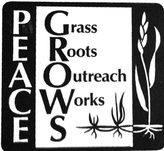Curriculum Syllabus
Materials revised March 2013, April 2015
Course goals:
Course objectives:
Session 1. Violence uses force to hurt life and escalates through retaliation.
Session 2. The actual or perceived denial of a human need causes violence but there are many peaceful, effective responses.
Session 3. Active listening and using l-statements are essential skills.
Session 4. The willingness to share power is key to all group problem solving.
Session 5. Successful nonviolent personal self defense requires never acting like a victim.
Session 6. There have been many, but usually little-known, lives to guide us about nonviolence.
Session 7. Six-step problem solving is a focused means of consensus decision-making in a group.
Session 8. Alternatives to violence skills learned at the personal level have counterparts that apply to community problems.
Session 9. Nonvìolent national defense has been applied successfully in various international situations with different types of aggressors.
Session 10. Citizens of a democracy must learn and select from the many ways to get involved.
Session 11. A major cause of global violence is the unfair distribution of world resources.
Session 12. Improving conditions can be assured if enough people come together with real dedication and a clear, practical vision of objectives.
- To introduce ways to solve human problems and overcome evil without fighting or violence.
- To learn principles and skills for experimenting with and using alternatives to violence.
- To provide, for any situation, additional choices which, otherwise, would not have been known.
Course objectives:
Session 1. Violence uses force to hurt life and escalates through retaliation.
- To learn the different kinds and classes of violence.
- To define violence, differentiate it from conflict and anger.
- To understand particularly the main characteristic of violence and how that relates to starting, preventing, stopping and reducing violence.
Session 2. The actual or perceived denial of a human need causes violence but there are many peaceful, effective responses.
- To learn causes of conflict and violence.
- To recognize and define institutional violence and understand its effect on people.
- To understand better how we each respond to conflict.
Session 3. Active listening and using l-statements are essential skills.
- To learn and practice nonviolent listening skills.
- To understand the importance of stating things clearly and getting all the facts.
- To learn how to handle anger nonviolently and constructively.
Session 4. The willingness to share power is key to all group problem solving.
- To learn principles and skills for handling the anger of another at me.
- To learn the principles and skills for handling anger between others through third-party intervention.
- To define negotiation, mediation, arbitration.
Session 5. Successful nonviolent personal self defense requires never acting like a victim.
- To examine cases where nonviolent personal self-defense has worked successfully and determine how and why.
- To develop some basic skills and attitudes for defending oneself nonviolently.
- To define nonresistance and distinguish it from noncooperation.
Session 6. There have been many, but usually little-known, lives to guide us about nonviolence.
- To probe the meaning and significance of nonviolence in our lives.
- To learn about the nonviolent philosophies and lifestyles of other people.
- To consider how nonviolence relates to and/or is part of our own philosophies and conduct.
Session 7. Six-step problem solving is a focused means of consensus decision-making in a group.
- To learn more communication problems, in group decision making, and steps to overcome them.
- To explore the nature of power in normal authority roles and in nonviolent roles.
- To understand how to facilitate a group solution through consensus decision making.
Session 8. Alternatives to violence skills learned at the personal level have counterparts that apply to community problems.
- To review alternatives to violence skills for use in personal conflict situations.
- To learn how the skills apply in community conflicts and examine some actual uses.
- To understand causes of violence in our communities and the prerequisites for creating nonviolent communities.
Session 9. Nonvìolent national defense has been applied successfully in various international situations with different types of aggressors.
- To examine our own attitudes toward national security.
- To learn some creative methods for nonviolent national defense.
- To define nonviolent national defense.
Session 10. Citizens of a democracy must learn and select from the many ways to get involved.
- To better understand how well the media reports the news and how that affects the prevalence of violence and serves our needs as citizens of a democracy.
- To learn other ways of working in the United States for nonviolent improvements when the alternatives to violence talking skills fail to get results.
- To understand those methods better and how their use is encouraged under the provision of the U.S. Constitution.
Session 11. A major cause of global violence is the unfair distribution of world resources.
- To understand how our lifestyle affects domestic and global violence.
- To review alternatives to violence skills for conflict resolution at both the personal and community levels and to learn how these skills apply in global- conflict situations.
- To define simple living and see how some are applying it.
Session 12. Improving conditions can be assured if enough people come together with real dedication and a clear, practical vision of objectives.
- To envision what it would be like if there were only nonviolent conduct in whatever framework we wish to examine: classroom, home, workplace, school, athletic field, neighborhood, community, nation, World.
- To determine the needed steps and time schedule to get there. (i.e., to a world without weapons, a school without corporal punishment, etc.)
- To realize how clearly envìsìoning a goal helps us get there.
LIST OF CASES:
|
1A - QUICK CHANGE ARTIST
1B - GREETINGS! 1C - BUDDHIST ABBOT’S COURAGE 2A - RIVER OF DEATH IN BRAZIL 2B - ME FIRST! 2C - PUT ON A HAPPY FACE 2D - DE-ESCALATING CONFLICT 3A - ROSA’S QUIET COURAGE 3B - UP TO THEIR SHOULDERS IN FLOODWATERS 3C - GETTING INVOLVED 3D - STUDENT PARTICIPATION 4A - BEDROOM INTRUDER 4B - GANDHI’S FAMOUS "SALT MARCH” 4C - STEERING A TATTLER 4D - SYNTHlA’S LEARNING 4E - NEW KINDERGARTEN REBEL 4F - WITH CALM WORDS 5A - QUAKER JUSTICE FORGES PEACE 5B - LINGUISTIC MIRACLES 5C - QUAKER DOCTOR’S ANSWER 5D - DISCUSSION IMPROVES 5E - ANOTHER TEACHER’S EXPERIENCE 5F - FAMILY CIRCLE 5G - CHALLENGE OF REALLY LISTENING 5H - TAKE YOUR TURN 6A - AN ABERRANT STUDENT 6B - HANDLING ANGER 6C - NEW APPROACH 6D - SMILE 7A - TROUBLE IN THE SUBWAY 7B - HANDLING TEACHER ANGER 7C - THOSE ANGRY PHONE CALLS 7D - FIRST GRADERS TALK TO THEMSELVES 7E - NAME CALLING 7F - STEP BY STEP |
8A - MEDIATION SUCCEEDS
8B - A TOUGH CHALLENGE FOR MEDIATION 8C - SPONTANEOUS MEDIATION 8D - DISPUTE BECAME BLOODY 9A - HOW DO YOU RESPOND TO BEING KNIFED? 9B - CELL BLOCK RAPE THREATENED 9C - MUGGER DIVERTED FROM VIOLENCE 9D - HOLDUP 9E - CRAZY LIKE TWO FOXES 9F - ALLEY ATTACK 9G - HE SCREAMED ANYWAY 10A - JOHN WHO? 10B - IT TAKES STIFF COURAGE 10C - MERCY VOYAGES OF THE PHOENIX 10D - SOFT ANSWER WORKS 10E - FOLLOWING A HIGHER LAW 11A - A TORMENTING MAJORITY 11B - STOLEN EAR MUFFS 11C - SPONTANEOUS STUDENT REACTIONS 11D - NONVIOLENT INTERVENTION 11E - RESTROOM MANNERS 11F - A CONFLICT SITUATION: 12A - ZEROING IN ON A PROBLEM 12B - A WAVE OF IDEAS 12C - THOSE DARN KIDS 13A - BATTLE OF NERVES 13B - GRAPES OF WRATH 13C - CONTEMPORARY INQUISITION 13D - UNION BASHING 13E - WOMEN SUFFRAGISTS ASK: 13F - SHOOTING OUR OWN CITIZENS IN KENT 14A - WHEN INVASION OCCURS 14B - STEMMING THE TIDE 14C - A QUICK KISS 14D - OVERCOMING SOCIETAL VIOLENCE |

